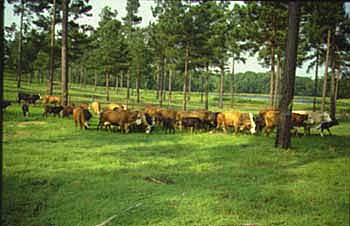Panel Discussion: Silvopastoral Practices Around the World
Introduction:
Welcome to our panel discussion on silvopastoral practices, a sustainable land management approach that integrates trees with livestock grazing. Today, we have gathered experts from different parts of the world to shed light on their experiences and perspectives regarding silvopasture.
Panelists:
1. Dr. Maria Santos – Researcher specializing in silvopastoral systems in South America.
2. Mr. John Thompson – Farmer practicing silvopasture in North America.
3. Ms. Amina Khan – Environmentalist promoting agroforestry in Asia.
Moderator (M): Let’s start by defining what silvopasture means to each of you.
Dr. Santos (DS): Silvopasture is a dynamic system where trees are intentionally integrated into pastureland for mutual benefits such as shade for animals, improved soil health, and diversified income streams for farmers.
Mr. Thompson (JT): Absolutely! For me, it’s about creating a balanced ecosystem where my cattle can graze under tree canopies while also benefiting from windbreaks and reduced heat stress during summer months.
Ms. Khan (AK): I agree with both perspectives; however, I believe it goes beyond just livestock benefits since incorporating trees into agricultural landscapes helps combat climate change by sequestering carbon and enhancing biodiversity.
M: Excellent points! Now let’s explore some unique aspects of your respective regions’ silvopastoral practices.
DS: In South America, particularly Brazil and Argentina, farmers have successfully implemented “Sistema Voisin,” which involves rotational grazing under various tree species like eucalyptus or acacia. This practice optimizes grass growth while providing shade and shelter for animals.
JT: In North America, agroforestry practices vary across regions due to climatic differences but commonly involve planting fast-growing tree species like black locust or honey locust for fodder production. These trees also provide windbreaks, improve soil fertility, and create wildlife habitats.
AK: In Asia, agroforestry has a rich history. For example, in India, farmers practice “Taungya” where they intercrop trees with agricultural crops or integrate them into tea plantations. This not only increases yield but also supports biodiversity conservation.
M: Fascinating! Now let’s discuss the challenges associated with silvopastoral practices.
DS: Lack of awareness and technical knowledge is a major hurdle in South America. Farmers need support to adopt these systems effectively and sustainably.
JT: Infrastructure development can be challenging in North America, especially when it comes to implementing proper fencing and water management systems within silvopastures.
AK: In Asia, traditional farming practices sometimes resist change due to cultural barriers or lack of financial incentives. We need policy support and market mechanisms that incentivize silvopasture adoption.
M: Thank you all for sharing your insights on this topic. Before we conclude, any final thoughts?
DS: Silvopastoral practices offer multiple benefits; they are not just about livestock production but also environmental sustainability.
JT: It’s important for farmers to understand that transitioning from conventional grazing systems may require patience and adaptation while reaping long-term rewards such as improved animal welfare and reduced dependency on external inputs like fertilizers or pesticides.
AK: Agreed! We must promote knowledge-sharing platforms among countries practicing silvopastoral techniques so that we can learn from each other’s successes and failures to accelerate global adoption of this sustainable land management approach.
Conclusion:
Silvopastoral practices are gaining recognition worldwide as a holistic solution towards sustainable agriculture. By integrating trees with livestock grazing, farmers can enhance productivity while mitigating climate change impacts and conserving natural resources. With continued research, awareness campaigns, supportive policies, and farmer education programs – silvopastoral practices have the potential to transform our agricultural landscapes for a greener and more resilient future.


Leave a comment